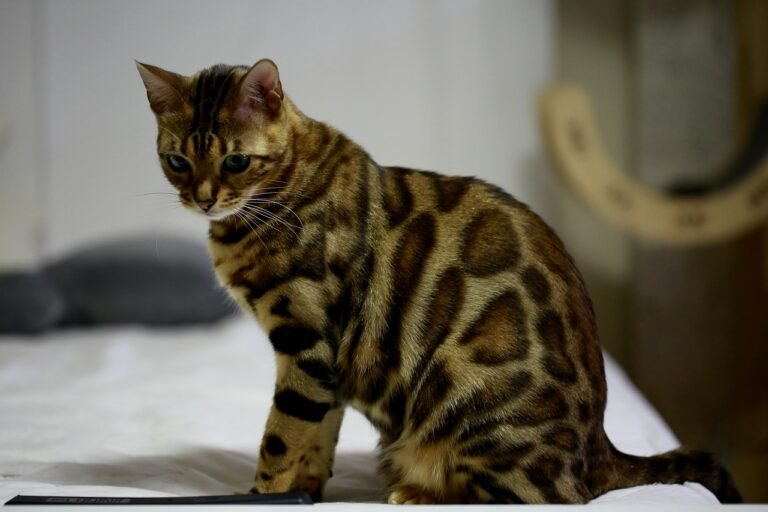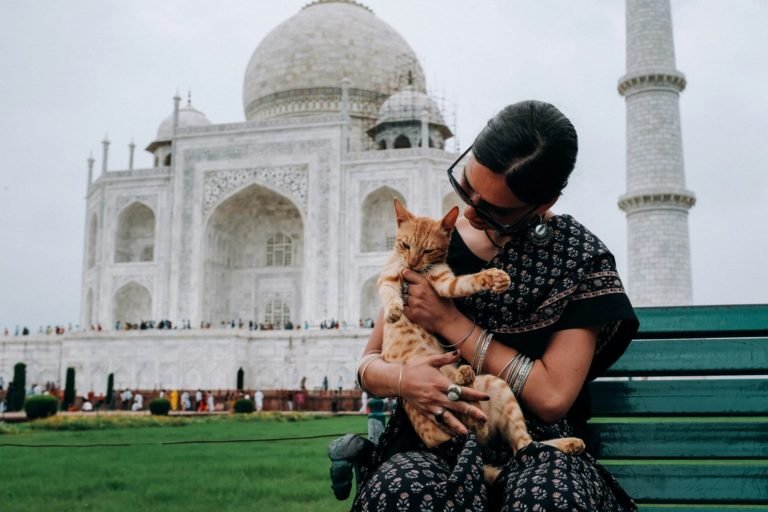
Hey there, cat lovers! Today, we’re going to talk all about one of the most popular and recognizable cat breeds out there – the Persian cat.
These adorable fluffballs have been stealing hearts for centuries, and it’s easy to see why. So, let’s dive in and learn everything there is to know about these fabulous felines!
What is a Persian cat?
First things first, let’s talk about what makes a Persian cat a Persian cat. These kitties are known for their round faces, big eyes, and, most importantly, their long, luxurious coats. Persian cats have been around for a very long time, and they’re one of the oldest cat breeds in the world!
When you think of a Persian cat, you might picture a white, fluffy kitty with a smushed-in face. While that’s one type of Persian, these cats come in all sorts of colors and patterns. But no matter what they look like on the outside, all Persian cats share some common traits that make them special.
The Persian cat breed is known for being calm, gentle, and loving. These cats are not usually the kind of cats that will run around like crazy or climb up your curtains. Instead, they prefer to lounge around and look pretty – which they’re very good at!
A Brief History of Persian Cats
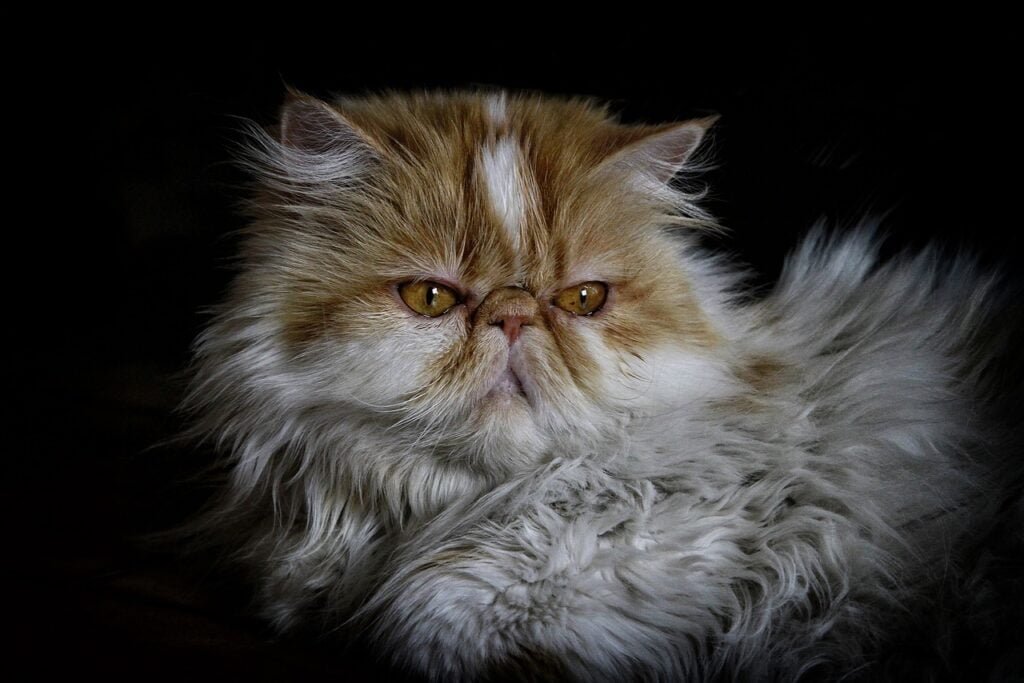
Now, let’s take a little trip back in time to learn where Persian cats came from. As you might guess from their name, Persian cats originally came from Persia, which is now called Iran. These cats have been around for hundreds of years, and they were first brought to Europe in the 1600s.
Back then, Persian cats looked a bit different than they do now. They had longer noses and weren’t quite as fluffy. But people in Europe fell in love with these beautiful cats, and they started breeding them to make them even fluffier and give them rounder faces.
Queen Victoria of England was a big fan of Persian cats, and she helped make them popular all over the world. From there, the Persian cat breed spread to America and became one of the most loved cat breeds around.
What Does a Persian Cat Look Like?
Now, let’s talk about what makes Persian cats so special to look at. These kitties are like walking clouds of fur!
- Face: Persian cats have very round faces with big, expressive eyes. Their noses are small and pushed in, which gives them that cute, smushed look. Some Persian cats have very flat faces, while others have a bit more of a nose.
- Body: These cats are medium to large-sized, with a sturdy, round body. They’re not usually very tall, but they can be quite heavy because of all that fur!
- Coat: The most famous thing about Persian cats is their long, thick coat. Their fur can grow up to 8 inches long! It’s super soft and fluffy, and it covers their whole body, even their legs and tail.
- Colors and Patterns: Persian cats come in almost every color and pattern you can imagine. They can be solid colors like white, black, or red, or they can have patterns like tabby or calico. Some even have color points, like Siamese cats.
- Eyes: Persian cats usually have big, round eyes that can be blue, green, gold, or copper-colored. Some Persian cats even have different colored eyes!
- Ears: Their ears are small and round, and they’re almost hidden in all that fur on their heads.
- Tail: Persian cats have short, fluffy tails that look like a little pom-pom.
All of these features come together to make Persian cats look like adorable, cuddly teddy bears. It’s no wonder so many people fall in love with them at first sight!
Persian Cat Personality: What Are They Like?
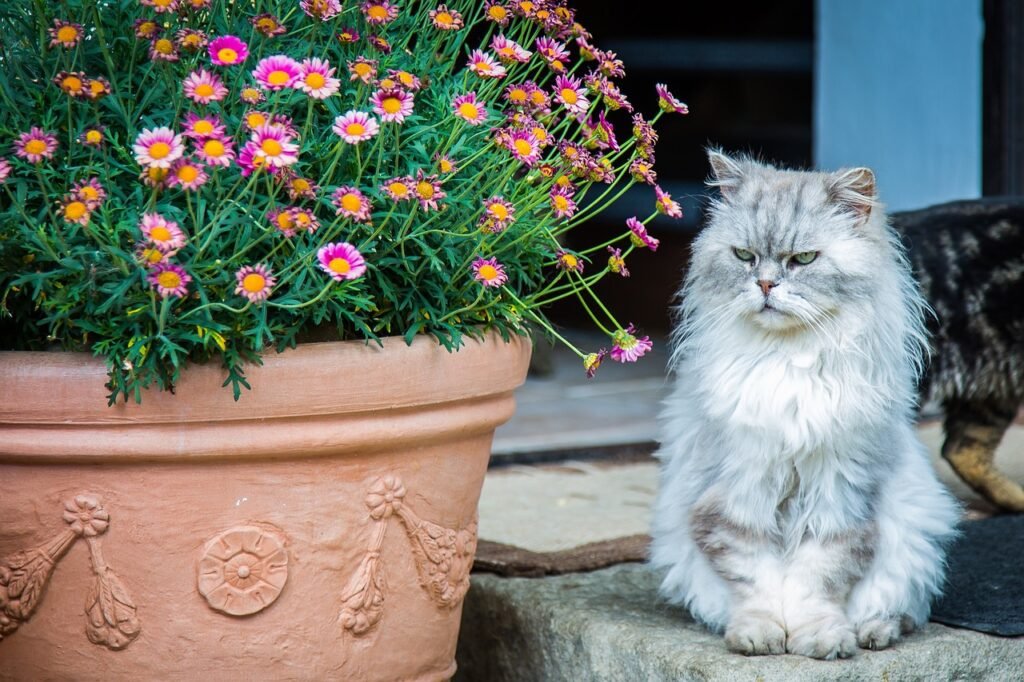
Now that we know what Persian cats look like, let’s talk about what they’re like on the inside. Every cat is unique, of course, but Persian cats are known for having certain personality traits that make them special.
- Calm and Laid-back: Persian cats are usually very relaxed and easygoing. They’re not the kind of cats that will zoom around the house or get into everything. Instead, they prefer to find a comfy spot and chill out.
- Quiet: These kitties aren’t usually very vocal. They might give a soft meow when they want something, but they’re not known for being chatty cats.
- Loving: Persian cats are super affectionate with their families. They love to cuddle and be close to their people. Many Persian cats will follow their owners from room to room to be near them.
- Gentle: These cats are usually very gentle and patient. They can be great with kids and other pets because they don’t get upset easily.
- Independent: While Persian cats love their people, they’re also okay with being alone sometimes. They don’t need constant attention and can entertain themselves.
- Not Very Active: Persian cats aren’t usually big jumpers or climbers. They prefer to stay on the ground or low furniture. This doesn’t mean they never play – they prefer gentler games.
- Sensitive: Persian cats can be sensitive to changes in their environment. They like routine and might get stressed if things change too much.
All of these traits make Persian cats great companions for people who want a calm, cuddly pet. They’re perfect for quiet homes where they can be pampered and loved.
Taking Care of a Persian Cat
If you’re thinking about getting a Persian cat, it’s important to know that they need a bit more care than some other cat breeds. Their beautiful fur and special features mean they have some specific needs. Taking care of a Persian cat is a big job, but for people who love these beautiful kitties, it’s totally worth it!
Let’s talk about what it takes to keep a Persian cat healthy and happy.
Grooming
This is the biggest job when it comes to Persian cats. Their long, thick fur needs a lot of attention to keep it looking good and feeling comfortable for the cat.
- Brushing: Persian cats need to be brushed every day. Regular brushing helps prevent their fur from getting tangled and matted. It also helps reduce hairballs, which can be a problem for long-haired cats.
- Bathing: Unlike most cats, Persian cats usually need regular baths. How often depends on the cat, but it’s usually every few weeks to every couple of months.
- Eye Care: Because of their flat faces, Persian cats can have watery eyes. You’ll need to gently clean around their eyes every day to prevent staining and irritation.
- Dental Care: Like all cats, Persians need good dental care. Regularly brushing their teeth can help prevent dental problems.
Feeding Your Persian Cat
Persian cats don’t have any special diet needs, but because of their flat faces, they might prefer certain types of food bowls. Shallow bowls or plates can make it easier for them to eat comfortably.
Exercise
Even though Persian cats aren’t very active, they still need some exercise to stay healthy. Gentle play sessions with toys they can bat around are usually perfect for them.
Health Care
Regular vet check-ups are important for all cats, but Persian cats need more attention. Their flat faces can sometimes cause breathing or eye problems, so it’s important to keep an eye on these things.
Living Space
Persian cats are indoor cats. Their long fur can get dirty and tangled easily if they go outside. They’re happy living in apartments or houses as long as they have comfy places to relax.
Temperature
Because of their thick coats, Persian cats can get too hot easily. It’s important to keep them cool in warm weather.
Litter Box
Persian cats need a clean litter box. Their long fur can sometimes pick up litter, so you should help them stay clean.
Common Health Issues in Persian Cats
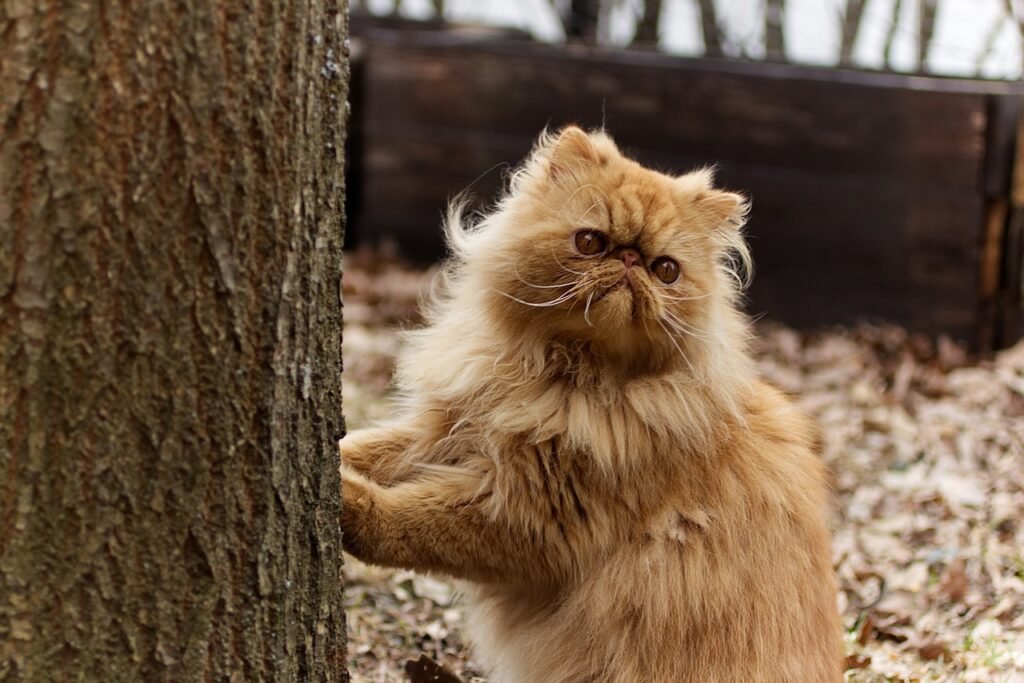
Like all cat breeds, Persian cats can have some health problems. It’s good to know about these so you can watch out for them and get help from a vet if needed.
- Breathing Problems: Because of their flat faces, some Persian cats can have trouble breathing. This condition is called brachycephalic airway syndrome. It can make it hard for them to exercise or stay cool in hot weather.
- Eye Problems: The shape of their face can also cause eye issues. Persians can get tear stains, eye infections, or a condition called cherry eye.
- Dental Issues: Their flat faces can make their teeth crowded, which can lead to dental problems.
- Polycystic Kidney Disease: This is a genetic condition that some Persian cats can have. It causes cysts to form in the kidneys.
- Heart Disease: Some Persian cats can develop a heart condition called hypertrophic cardiomyopathy.
- Hairballs: Because of their long fur, Persian cats can get hairballs more often than other cats.
- Skin Problems: Their thick coats can sometimes lead to skin issues if not kept clean and well-groomed.
Remember, not all Persian cats will have these problems. Many live long, healthy lives. Regular vet check-ups can help catch any issues early.
Is a Persian Cat Right for You?
After learning all about Persian cats, you might be wondering if one would be a good pet for you. Here are some things to think about:
Pros of Having a Persian Cat:
- They’re calm and gentle, great for quiet homes.
- They’re very loving and affectionate.
- They’re beautiful to look at.
- They don’t need lots of exercise or space.
- They’re generally good with kids and other pets.
Things to Consider:
- They need a lot of grooming.
- They can have some health issues.
- They can be expensive to buy and care for.
- They’re not very active, so they’re not great for people who want a playful cat.
- They need to be indoor cats.
A Persian cat might be right for you if:
- You have time for daily grooming.
- You want a calm, cuddly pet.
- You don’t mind regular vet check-ups.
- You’re okay with an indoor-only cat.
- You like having a beautiful, elegant pet.
A Persian cat might not be the best choice if:
- You don’t have much time for grooming.
- You want a very active, playful cat.
- You’re looking for a low-maintenance pet.
- You want a cat that can go outside.
- You’re on a tight budget.
Remember, getting any pet is a big decision. It’s important to think carefully about whether you can give a Persian cat the care it needs.
How to Choose a Persian Cat
If you’ve decided that a Persian cat is right for you, the next step is choosing your new furry friend. Here are some tips:
- Decide on Age: Kittens are cute but need more care. Adult cats are calmer, and their personalities have already developed.
- Choose a Color: Persian cats come in many colors. Think about which you like best.
- Find a Good Breeder: Look for a breeder who cares about the health of their cats. They should let you see where the cats live and meet the parents.
- Check for Health: The cat or kitten should look healthy, with clear eyes and clean ears. Ask to see health certificates.
- Watch Personality: Spend time with the cat before deciding. Make sure the cat’s personality fits with what you want.
- Consider Adoption: Many Persian cats need homes. Check with rescue groups or shelters
- Ask Questions: A good breeder or rescue group will be happy to answer all your questions about the cat.
- Prepare Your Home: Before bringing your new cat home, make sure you have everything they need – food, litter box, grooming tools, etc.
Bringing Your Persian Cat Home

Yay! You’ve chosen your new Persian cat friend. Now, it’s time to bring them home. Here are some tips to help your new kitty settle in:
- Set Up a Safe Space: Give your cat a quiet room with food, water, a litter box, and comfy places to hide and sleep.
- Introduce Slowly: Let your cat explore at their own pace. Don’t force them to interact if they’re not ready.
- Start Grooming Early: Get your cat used to being brushed right away. Make it a positive experience with treats and praise.
- Visit the Vet: Schedule a check-up soon after bringing your cat home.
- Be Patient: It can take time for a cat to feel comfortable in a new home. Give them plenty of love and space.
- Establish a Routine: Persian cats like routine. Try to feed, play, and groom at regular times.
- Watch for Any Problems: Keep an eye out for signs of stress or illness, especially in the first few weeks.
Conclusion
Whew! We’ve covered a lot about Persian cats. From their fluffy fur to their calm personalities, these kitties are truly special. They might need a bit more care than some other cats, but for many people, the love and companionship of a Persian cat is totally worth it.
Remember, every cat is an individual. While Persian cats are known for being calm and gentle, your Persian might have its unique personality. The most important thing is to give your cat lots of love, care, and attention.
Whether you’re just learning about Persian cats or thinking about getting one, this blog has been helpful. Persian cats have been beloved pets for hundreds of years, and it’s easy to see why. With their beautiful looks and loving personalities, they truly are one of a kind.
So, what do you think? Are you ready to welcome a fluffy Persian cat into your life? You may already have one and can share your own experiences. Either way, one thing’s for sure – life with a Persian cat is never boring!
Remember, no matter what kind of cat you have or are thinking about getting, the most important thing is to give them lots of love and take good care of them. Happy cat cuddling!


